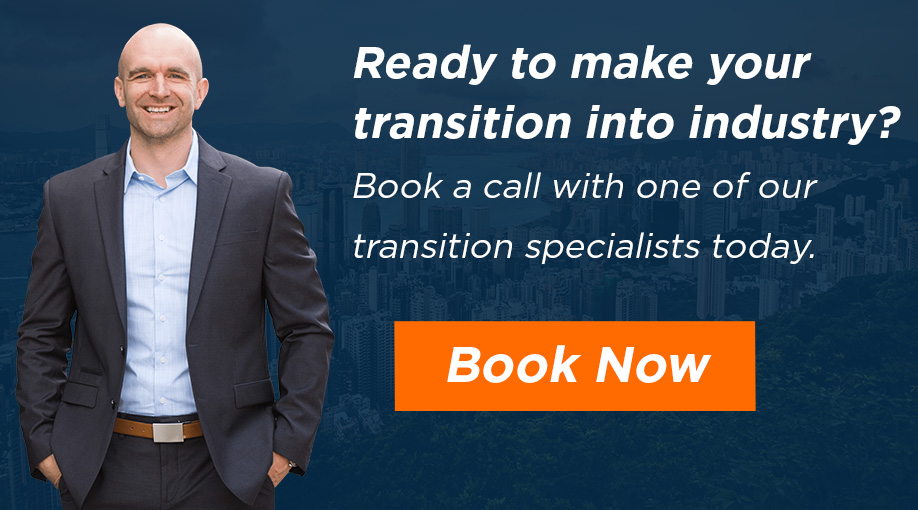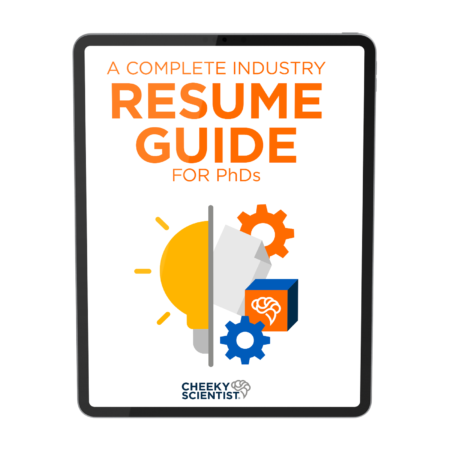3 Ways To Ruin Your Job Search With A Poor LinkedIn Profile

When I first began my industry job search, I was completely out of my element.
I didn’t even know if I was qualified for any job outside of a university.
It seemed like all I knew was academia, and all the skills I had revolved solely around the lab and publishing research.
But, I didn’t want to be in academia anymore.
Academia had left me depressed, anxious, and completely unsure of my future.
I wanted a job in industry.
But, how did people get non-academic jobs?
I had been submitting my resume online for months, but never heard anything back. It was extremely frustrating.
I had no idea what to do.
But, it all changed when I started networking.
Instead of spending all my time trolling job boards, I went to events, I met new people, I joined professional societies, and I got involved.
This opened up many new opportunities for me.
But, when I started following up with these great new connections, I realized the importance of my professional profile.
I realized that my LinkedIn profile mattered.
People wanted to connect with me. They wanted to see my resume. They wanted my business card.
In academia, you are told that your LinkedIn profile does not matter and you are defined by your publication record.
This is not true in industry.
I quickly revamped my LinkedIn profile and created an industry-style resume.
With a solid professional profile and quality networking plan, I was on the right path, and it was only a matter of time before I had my first industry position.
Why You Must Perfect Your LinkedIn Profile Before Reaching Out To People

When making professional connections, in order to follow up, you are going to need a professional profile.
This means you are going to need a LinkedIn profile, a business card, a resume, etc.
Each of these items is a part of your professional appearance.
Many times, when networking online, the very first thing a new connection will see is your LinkedIn profile.
According to Jobvite, 87% of recruiters use LinkedIn to screen candidates.
These recruiters are using LinkedIn to judge not only your qualifications, but also how you would fit into the company.
Your professional profile is your first impression on new connections and potential employers.
A study at Cornell University, as reported by Science Daily, found that first impressions, although formed in seconds, can alter the way you are perceived, even after 6 months.
In other words, overcoming a bad first impression is very difficult — you must do all you can to make the best first impression possible.
This includes having a high quality professional profile.
And, the great thing about your professional profile is that you have complete control over how it looks and what information it contains.
You are in control of that first impression.
Don’t ruin a potential job opportunity with a bad professional profile.
3 Ways Your Bad LinkedIn Profile Is Ruining Your Job Search
Having an outstanding resume or LinkedIn profile is not enough to get you hired, but having a bad professional profile is enough to prevent you from getting hired.
Networking should be the foundation of your job search.
But, to network effectively, you need to have a tidy professional profile to direct your connections to, which includes both a resume and a LinkedIn profile.
Networking is time and energy intensive, so don’t ruin that hard work with a poor professional profile.
Here are common 3 mistakes PhDs make in their professional profile…
1. Having a bad LinkedIn profile picture.
Meeting someone in person, shaking their hand, and looking them in the eye builds an incredible amount of rapport.
But, sometimes it’s not possible to meet a new connection in person.
Online networking through LinkedIn is very common and can add great value to your job search.
But, it can be much harder to build rapport when networking online, and you can’t actually meet in person.
In order to build rapport as quickly as possible, you must have a professional and inviting LinkedIn picture.
A bad or non-existent profile picture is a definite way to have your connection requests denied and messages ignored.
Having no picture or a picture of something that is not you makes your profile seem fake.
Someone you don’t know is not going to connect with you if they cannot see you.
According to LinkedIn, profiles with a photo receive 21 times more views and 36 times more messages than profiles without a photo.
But, you shouldn’t have just any photo of yourself as your profile picture.
Your profile picture should look professional.
You should be wearing business attire (not a lab coat).
You would never go to an interview in casual clothes or looking disheveled, and the same should be true for your profile picture.
Put effort into this photo, the same way you put effort into the other parts of you job search — don’t just take a selfie.
Finally, your picture needs to be inviting, and smiling in your photo is a great way to do this.
You want to look confident and approachable. You want to look like someone who would be great to work with.
A nice smile, good lighting, and high quality photography will give a great first impression to anyone you invite to your LinkedIn profile.
2. Not using keywords throughout your profile.

The real power of LinkedIn is that it can show your profile to hiring managers and recruiters that are looking to fill positions.
But, without an optimized profile packed full of keywords, you will not reap this benefit of LinkedIn.
LinkedIn uses an algorithm to rank your profile within searches that people make.
For example, when a hiring manager searches “biotech project manager Atlanta” LinkedIn searches for profiles that contain these words.
If you are a postdoc looking for an industry position like the one above, the only way you will appear in the hiring manager’s search is by having these exact words in your profile.
If your headline on LinkedIn is “postdoc/graduate researcher at xyz university” you have already set yourself up for failure.
Instead, your headline should contain the words, biotech, project manager, Atlanta, and any other major keywords for the positions you are interested in.
And, the addition of keywords does not stop at your headline.
Every single section of your LinkedIn profile (from your summary to your hobbies) should contain keywords relevant to the industry positions that you are interested in.
Every section is an opportunity to increase the likelihood that you will appear in a hiring manager’s search results.
This means that each part of your profile should be completely filled out.
Write as much as you can to fill up the word limit for each section, because this gives you more chances to include important keywords.
You can target your LinkedIn for more than one type of position.
Just include as many keywords as possible for each of the different industry positions you are targeting.
Done correctly, this will dramatically boost the number of searches that your profile appears in, and therefore increase your chances of being contacted by a hiring manager or recruiter.
3. Writing a robotic LinkedIn summary or having an incomplete profile.
Your LinkedIn summary is not a place to copy and paste your resume.
The summary section of your LinkedIn profile is your hook.
This is where you should write in the first person and show your personality a bit.
You do not want to sound robotic and boring, as this is the first part of your profile someone will see and will determine if they continue reading or not.
That being said, you should still use keywords and maintain a professional voice in your summary.
The layout of your summary should be very readable.
Consider using bullet points and space them out so there is ample white space.
This makes your summary much more readable and will encourage the viewer to continue scrolling down to see the rest of your profile.
As someone scrolls through your profile, it’s important that you profile is complete.
Each section of your profile, from your work experience to your skills, should be completely filled out, with consideration for the positions you are interested in.
A hiring manager is interested in your qualifications as well as your potential fit within the company.
Use each section of your profile to highlight keywords and skills that are required for the jobs you are interested in and demonstrate that you would be a great addition to any workplace environment.
Your professional profile is a key part of your job search strategy. In online networking situations, it is your first impression and it is how recruiters and hiring managers are judging whether you deserve an interview or not. While a good professional profile is not enough to get you a job, a bad professional profile is enough to keep you from getting hired. Make sure you get your professional profile in order before reaching out to people. This means making sure you have a good LinkedIn profile picture, a concise, industry-style resume, and a completed LinkedIn profile. Once your professional profile is in order, you are ready to leverage your network and get hired into the industry position that you want.
If you’re ready to start your transition into industry, you can apply to book a free Transition Call with our founder Isaiah Hankel, PhD or one of our Transition Specialists. Apply to book a Transition Call here.

ABOUT CATHERINE SORBARA, PH.D.
Cathy has a PhD in Medical Life Science and Technology and is COO of the Cheeky Scientist Association. Cathy is passionate about science communication including translating science to lay audiences and helping PhDs transition into industry positions. She is Chair of Cambridge AWiSE, a regional network for women in science, engineering and technology. She has also been selected to take part in Homeward Bound 2018, an all-female voyage to Antarctica aimed to heighten the influence of women in leadership positions and bring awareness to climate change.
More Written by Catherine Sorbara, Ph.D.































